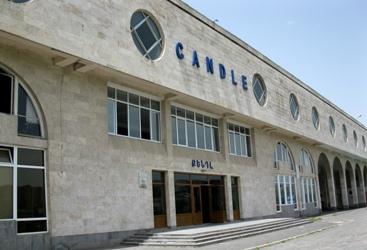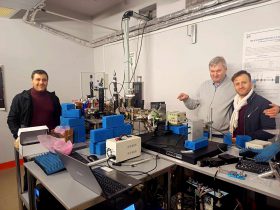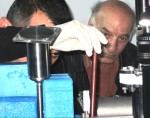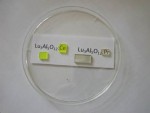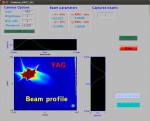May 20, 2015
Recently the experimental program of Scintillators study for the next-generation calorimeters conducted by the Institute for Physical Research of National Academy of Sciences of Armenia (Ashtarak) has successfully started on AREAL facility. The project leader Prof. Ashot Petrosyan has presented the first results of this study.
“Inorganic scintillators have various fields of applications including nuclear medicine, homeland security and high energy physics. In High-Luminosity Large Hadron Collider at CERN and other future electron and proton colliders very high levels of ionizing radiation are expected. Therefore, performance requirements raise the problem of radiation hardness of materials, along with the major goals of improving the timing properties and energy resolution of the detectors. Scintillators based on lutetium aluminum garnet (Lu3Al5O12; LuAG) with various activators are in the list of the most promising candidates for applications in future detectors. The Institute for Physical Research is currently performing large-scale studies on these scintillator materials, in the frame of the Crystal Clear Collaboration at CERN. The requirements for radiation tolerance are that after an integrated dose of 1 MGy, the degradation of optical properties is limited to 10%. The suppression and understanding of responsible defects at the ppm level are the major directions of investigations. At present, for irradiation tests a 60Co γ-ray source with 1.25 MeV photon energy and 860 Gy/h dose rate is used at the Institute for Physical Research.
Availability of the 5 MeV energy ultrashot pulses at the AREAL electron accelerator in CANDLE Synchrotron Research Institute offers additional possibilities for fundamental problem studies of material radiation tolerances. Recently, the first irradiation tests on LuAG:Ce and LuAG:Pr single crystals with applied doses of 1-1.5 kGy have been carried out at the AREAL facility. The Figure shows the optical transmission of one of the samples measured before and after the irradiation. The 520-550 nm range is very important, since the emission peak of this scintillator is at 520 nm. A small degradation is seen after the applied dose of 1 kGy. Comparison of the effects obtained with the two irradiation sources is in progress, while the next experiments may be done with other crystal compositions and exposed to higher irradiation doses. The Institute for Physical Research is interested in a long-term experimental research at the AREAL facility. “




